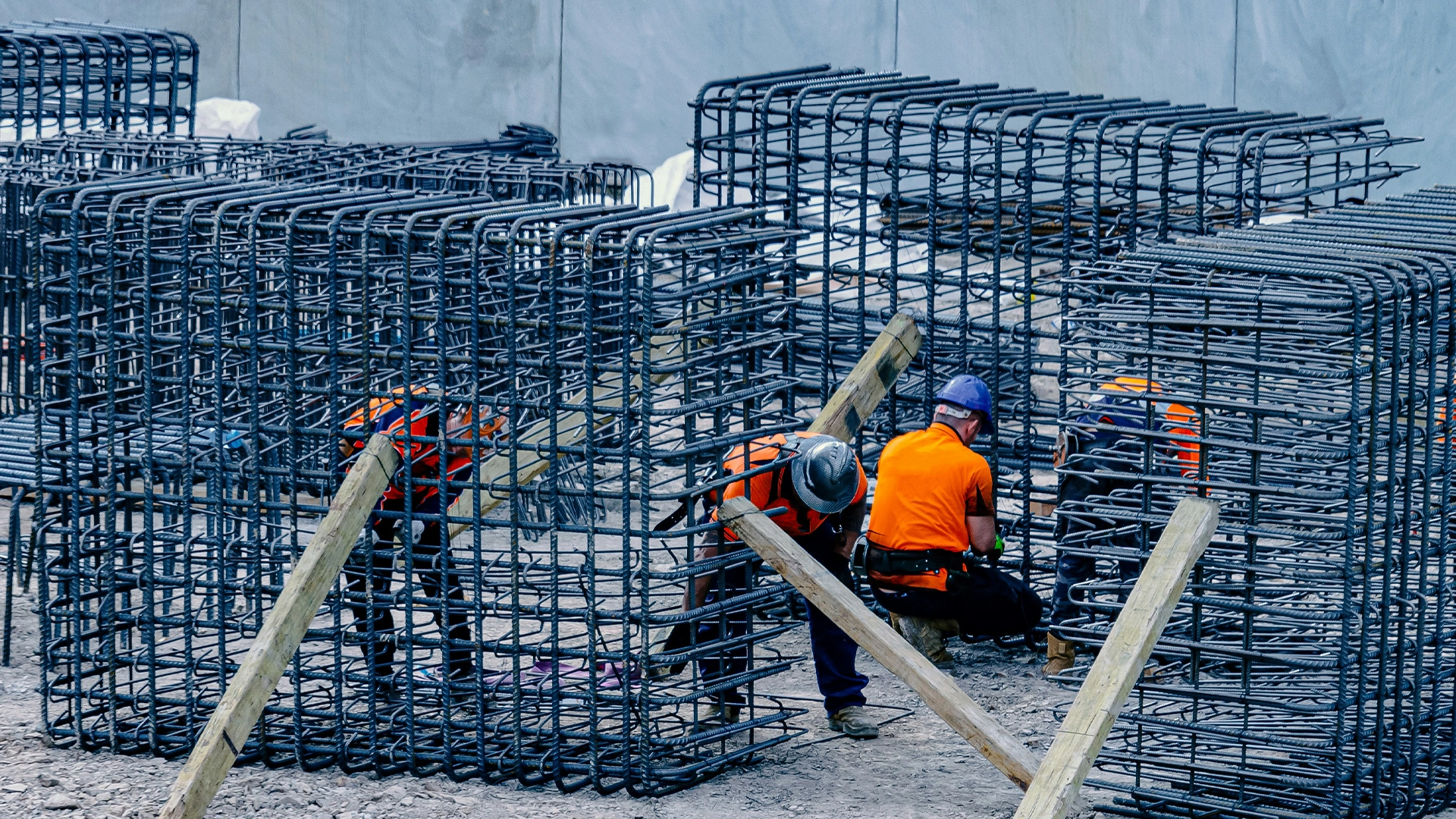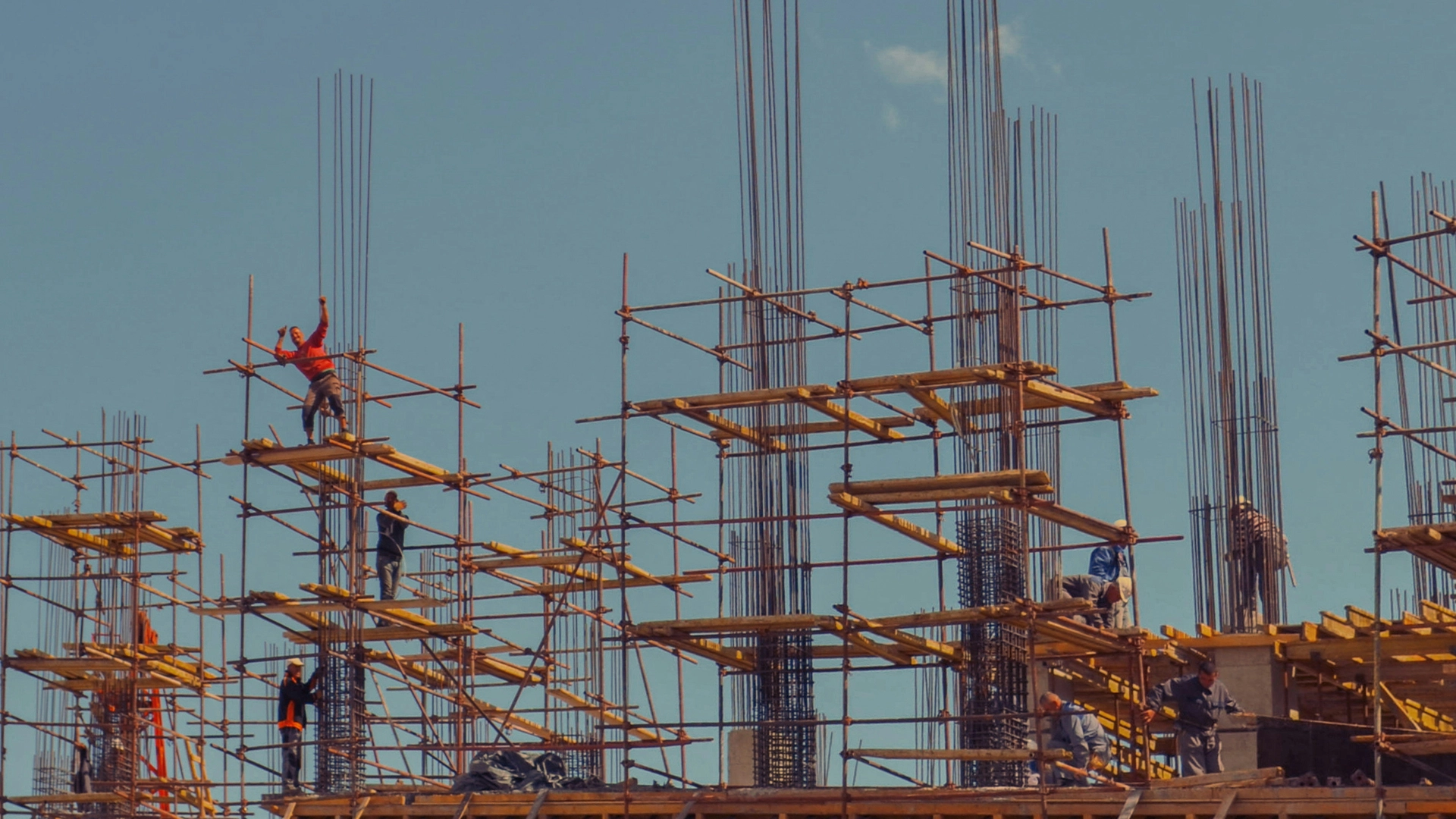Introduction to Steel Structures in Modern Engineering
In the world of modern architecture, the backbone of any impressive structure often lies in the steel framework that supports it. Steel Structures 101: Beams, Columns & Trusses in Modern Builds delves into the essential components that make up these sturdy designs, offering insights that are crucial for anyone involved in construction or structural engineering. Whether you’re an architect, a builder, or a homeowner looking to understand the intricacies of your project, this guide is for you.
This blog post will explore the fundamental roles of beams, columns, and trusses, which are vital in creating safe and durable buildings. Understanding these elements is not just about aesthetics; it’s about ensuring that your projects stand the test of time and meet safety standards. As we unravel the complexities of these structures, you’ll discover how their design and implementation can significantly influence both functionality and cost-effectiveness.
We’ll cover the various types of steel structures, their applications, and the engineering principles behind them. You’ll learn how these components work together to distribute loads, resist forces, and ultimately create a stable environment for the occupants. This knowledge is essential for anyone seeking structural engineering services, as it informs the decisions that lead to successful project outcomes.
Understanding Steel Structures 101: Beams, Columns & Trusses in Modern Builds is crucial not only for compliance with building regulations but also for enhancing the longevity and safety of your investments. By grasping these concepts, you can make informed choices and collaborate effectively with your engineering team. At Engineering Sydney, we pride ourselves on providing personalised consultancy that aligns with your unique project needs, ensuring that your structures are both practical and innovative.
If you’re ready to elevate your understanding of structural engineering and learn how to implement these vital components effectively, we invite you to explore this informative guide. Should you have any questions or require tailored advice, don’t hesitate to contact us. Together, let’s build a safer and more resilient future.
What is Steel Structures 101: Beams, Columns & Trusses in Modern Builds?
Steel Structures 101: Beams, Columns & Trusses in Modern Builds is a foundational concept in structural engineering that focuses on the essential elements of steel construction. This area of study encompasses the roles and characteristics of beams, columns, and trusses, which are critical components in modern building designs. Understanding these structures is vital for anyone involved in construction or engineering, as they form the backbone of many architectural projects.

Beams are horizontal components that bear loads and distribute them to columns, while columns are vertical structures that support the beams above. Trusses, on the other hand, are triangular frameworks that provide stability and strength, often used in roofs and bridges. Each of these elements plays a unique role in ensuring that a structure can withstand various forces, such as gravity and wind, and maintain its integrity over time. For example, think of a bridge as a giant truss that must support both its own weight and the weight of vehicles passing over it. Achieving this balance of strength, stability, and durability often depends on careful Material Selection in Structural Engineering, ensuring that every component is built from materials suited to its specific load, environment, and performance requirements.
In the broader context of structural engineering, Steel Structures 101: Beams, Columns & Trusses in Modern Builds is essential for developing safe, durable, and economically viable structures. This knowledge allows engineers to make informed decisions about material selection and design configurations, ensuring that buildings meet both functional and aesthetic requirements. At Engineering Sydney, we apply these principles to create innovative designs that not only meet your needs but also adhere to the highest safety standards.
It’s important to distinguish that while steel structures are robust, misconceptions may arise regarding their maintenance and longevity. Many people believe that steel is prone to rust or corrosion; however, with the right protective coatings and treatments, steel structures can be designed to endure harsh environmental conditions for decades. This expertise is part of what we offer at Engineering Sydney, ensuring that your projects benefit from our comprehensive understanding of structural systems.
Key Terms to Understand Steel Structures
To fully grasp the concepts behind Steel Structures 101: Beams, Columns & Trusses in Modern Builds, it’s essential to familiarise yourself with some key terms. Here, we break down important terminology that will enhance your understanding of structural engineering.
Beam
A beam is a horizontal structural element that supports loads perpendicular to its length. It plays a crucial role in transferring weight from the roof or floors to vertical supports such as columns or walls, ensuring the stability of a building or structure. Understanding beams is fundamental in Steel Structures 101 as they are integral in determining how loads are distributed across a structure, impacting both safety and design efficiency.
Column
A column is a vertical structural element that transmits loads from above down to the foundation. Columns are essential in supporting the weight of beams, floors, and roofs, making them a vital component in the framework of any building. In the context of Steel Structures 101, knowing about columns helps you appreciate how they interact with beams and trusses to create a safe and stable structure.
Truss
A truss is a structural framework of interconnected elements, typically arranged in triangular units to distribute loads efficiently. Trusses are commonly used in roofs and bridges to provide strength without excessive weight, allowing for larger spans and open spaces. Familiarity with trusses is critical in Steel Structures 101, as they illustrate how materials can be used effectively to achieve stability and aesthetic appeal.
Load-Bearing
Load-bearing refers to the ability of a structural element to support weight and resist forces applied to it. This concept is fundamental in structural engineering, as it ensures that buildings can safely withstand various loads, including those from occupants, furniture, and environmental factors. Understanding load-bearing elements is key in Steel Structures 101, as it directly relates to the safety and functionality of your construction projects.
Steel Frame
A steel frame is a construction method using steel columns, beams, and trusses to create a rigid framework for buildings. This technique offers significant advantages, such as durability, strength, and design flexibility, making it a popular choice in modern architecture. In Steel Structures 101, recognising the benefits of a steel frame helps you appreciate why it’s often the preferred material for large-scale constructions.
Tension and Compression
Tension and compression are two fundamental forces experienced by structural elements. Tension pulls or stretches an element, while compression pushes or shortens it. Understanding these forces is vital in Steel Structures 101, as they affect how beams, columns, and trusses must be designed and constructed to ensure safety and longevity.
Span
Span refers to the distance between two supports, such as columns or walls, that a beam or truss must bridge. The span is a critical consideration in structural design, influencing the choice of materials and methods used. In Steel Structures 101, understanding span is essential as it impacts the overall design and function of a building.
By familiarising yourself with these key terms, you will develop a stronger foundation in the principles of Steel Structures 101: Beams, Columns & Trusses in Modern Builds. This knowledge not only enhances your understanding but also empowers you to make informed decisions when engaging with structural engineering services.
Frequently Asked Questions about Steel Structures
In this section, we address some of the most common questions regarding Steel Structures 101: Beams, Columns & Trusses in Modern Builds. Our aim is to provide you with clear and concise answers that reflect our expertise and support your understanding of these essential components in structural engineering.
Beams play a crucial role in supporting loads and transferring them to columns or walls. They help distribute weight across a structure, ensuring stability and preventing deformation. Additionally, beams come in various shapes and sizes, allowing for flexibility in design depending on the specific requirements of your project.
While beams primarily bear loads horizontally, columns are vertical elements that support the weight of beams and the structure above. Columns must be designed to withstand compressive forces and are critical in maintaining the overall integrity of a building. Choosing the right type of column is essential for achieving both aesthetic appeal and structural efficiency.
Trusses are framework structures that consist of triangular units, providing support and stability across large spans. They are often used in roofs and bridges due to their lightweight nature and ability to distribute loads efficiently. By incorporating trusses, engineers can create open spaces without obstructive supports, enhancing architectural design.
The choice of materials significantly influences the durability, strength, and aesthetics of steel structures. Different grades of steel offer varying levels of resistance to stress and environmental factors. Our team at Engineering Sydney ensures that the selected materials align with your project’s requirements, balancing functionality and design.
Steel beams, columns, and trusses are commonly used in various applications, including commercial buildings, bridges, and industrial facilities. Their versatility allows for innovative designs that can meet the demands of modern architecture while ensuring safety and compliance with regulations. Examples include skyscrapers where steel frames provide the necessary strength and stability.
Building codes set out the standards and regulations that ensure safety and sustainability in construction. These codes dictate the specifications for materials, load capacities, and structural integrity. At Engineering Sydney, we stay up-to-date with current building codes to guarantee that your steel structure meets all necessary legal and safety requirements.
Load calculations are essential in determining how much weight a structure can safely support. They involve analysing various factors such as live loads, dead loads, and environmental influences like wind and seismic activity. Accurate load calculations ensure that beams, columns, and trusses are designed appropriately to handle expected stresses, thereby preventing structural failure.
We hope this FAQ section has clarified some of your questions about Steel Structures 101: Beams, Columns & Trusses in Modern Builds. If you have further inquiries or need personalised advice, feel free to contact us at Engineering Sydney.
Wrapping Up: The Foundations of Steel Structures
In conclusion, our exploration of Steel Structures 101: Beams, Columns & Trusses in Modern Builds has illuminated the fundamental components that play a crucial role in shaping today’s architectural landscape. We have discussed how beams, columns, and trusses not only provide structural integrity but also contribute to the aesthetic appeal and functionality of buildings. Understanding these elements is essential for anyone involved in the construction or design processes.
The significance of mastering the principles behind these steel structures cannot be overstated. As we’ve seen, they are integral to ensuring that modern builds are not only safe and durable but also efficient in their use of materials and resources. With the information shared, you now have a clearer grasp of how these components interact within the broader context of structural engineering, further enhancing your ability to engage with these concepts in real-world applications.
At Engineering Sydney, we are dedicated to providing tailored solutions that meet your specific project needs. We encourage you to apply the insights gained from this article to your own projects or inquiries. Whether you’re a homeowner, architect, or contractor, understanding these structures will empower you to make informed decisions in your ventures.
If you have questions or require further assistance regarding your structural engineering needs, we invite you to contact us. Our team is eager to help you navigate the complexities of modern builds, ensuring that your vision comes to life with safety and excellence at the forefront.

